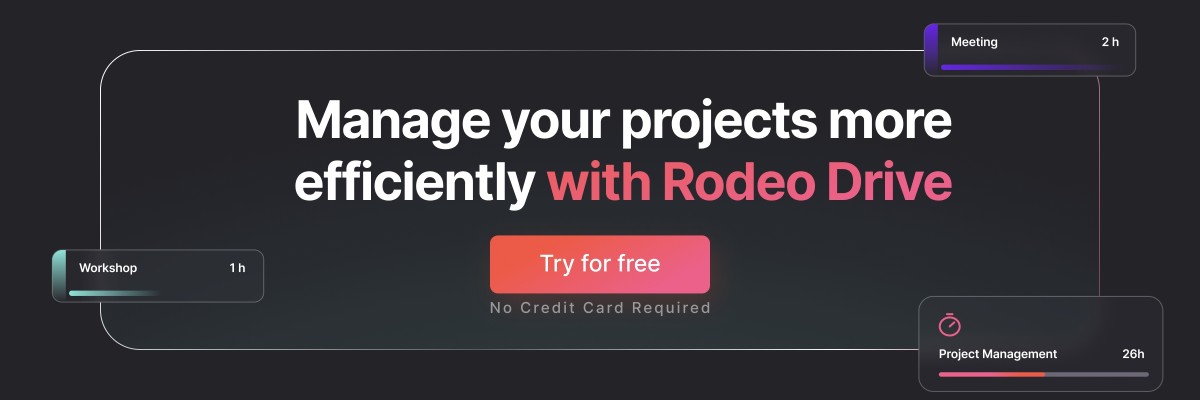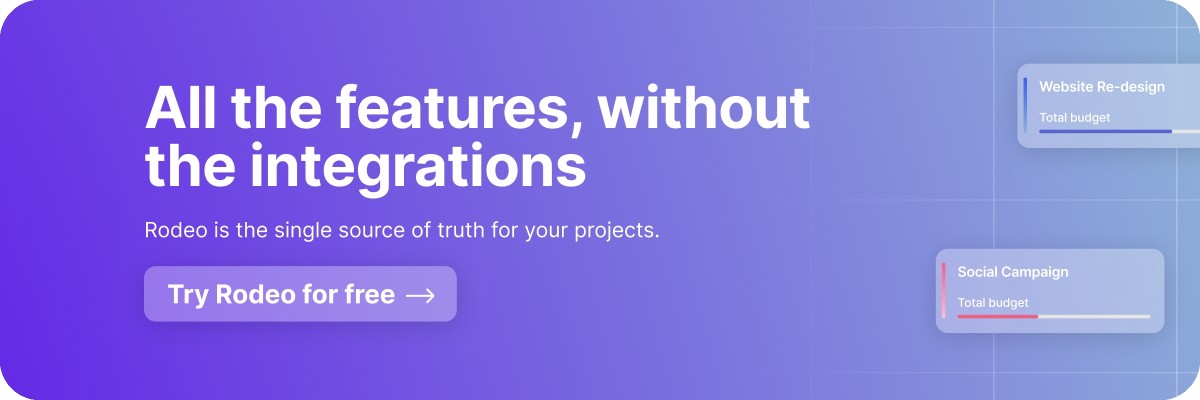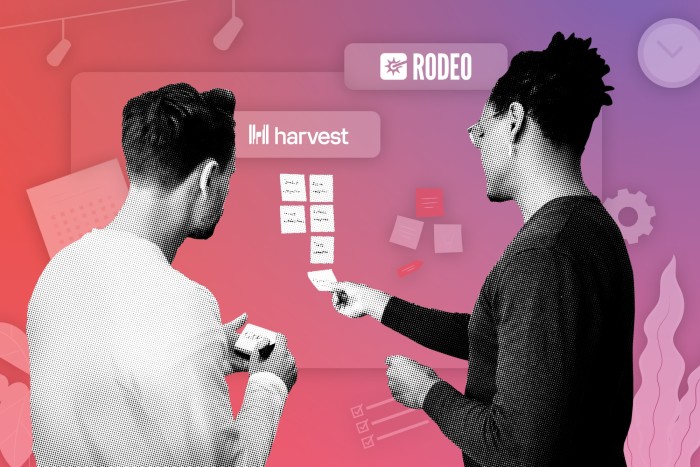Searching for Nifty Alternatives? Here Are 13 Worth Trying
Nifty is a popular project management software tool that helps teams plan their project roadmaps, organize tasks, and keep connected through team discussions. But although it can do a lot, some project managers find that Nifty doesn’t meet their needs.
If you’ve found yourself in the same boat, look no further. In this blog, we’ll take a look at 13 of the best Nifty alternatives on the market.
Why should I look for a Nifty alternative?
While there are many reasons why Nifty might not be the right fit for your team, three reasons stand out among online customer reviews. Let’s take a look:
#1 Confusing interface
Having a project management tool with a lot of features is useless if the interface is confusing and difficult to navigate. Unfortunately, online reviews of Nifty point to the platform being trickier than it needs to be.
The following G2 review illustrates just that:

#2 Missing features
Because there are so many project management tools out there, you’ll want one that combines several functionalities into a single tool. Nifty falls short of offering the robust budgeting and reporting insights that many project teams rely on, as seen in this Capterra review:

#3 Customer support misses the mark
The only thing more frustrating than a software tool that isn’t working properly is having to wait 4-5 business days to receive assistance from a member of the customer support team.
Several online reviewers reportedly had this happen with Nifty, as seen in the below Capterra review. The quality of your tool’s customer support team should certainly be a consideration, as long wait times could impact your ability to deliver projects on time.

13 Nifty alternatives to consider
Now that we’ve covered why you might be in the market for a Nifty alternative, here’s a look at the top 13 project management software options to consider.
1. Rodeo Drive
Rodeo Drive is a comprehensive project management software tool that brings together all of the features that teams need to manage their projects in just one tool.
With budgeting, time tracking, activity planning, invoicing, and reporting all available in Rodeo Drive, your team can streamline their workflows and eliminate the need for pricy third-party integrations.
Any project-based team can benefit from using Rodeo Drive, although we’ve built the tool with the needs of creatives in mind. The tool allows them to easily create and manage their budgets and track billable hours while improving project profitability in the process.
Here’s an overview of the features that make Rodeo Drive a strong choice over Nifty:
Seamless interface that’s clearly labeled
When you log into Rodeo Drive, you’ll land on your “Projects” tab, which clearly lays out all of your projects along with their status.
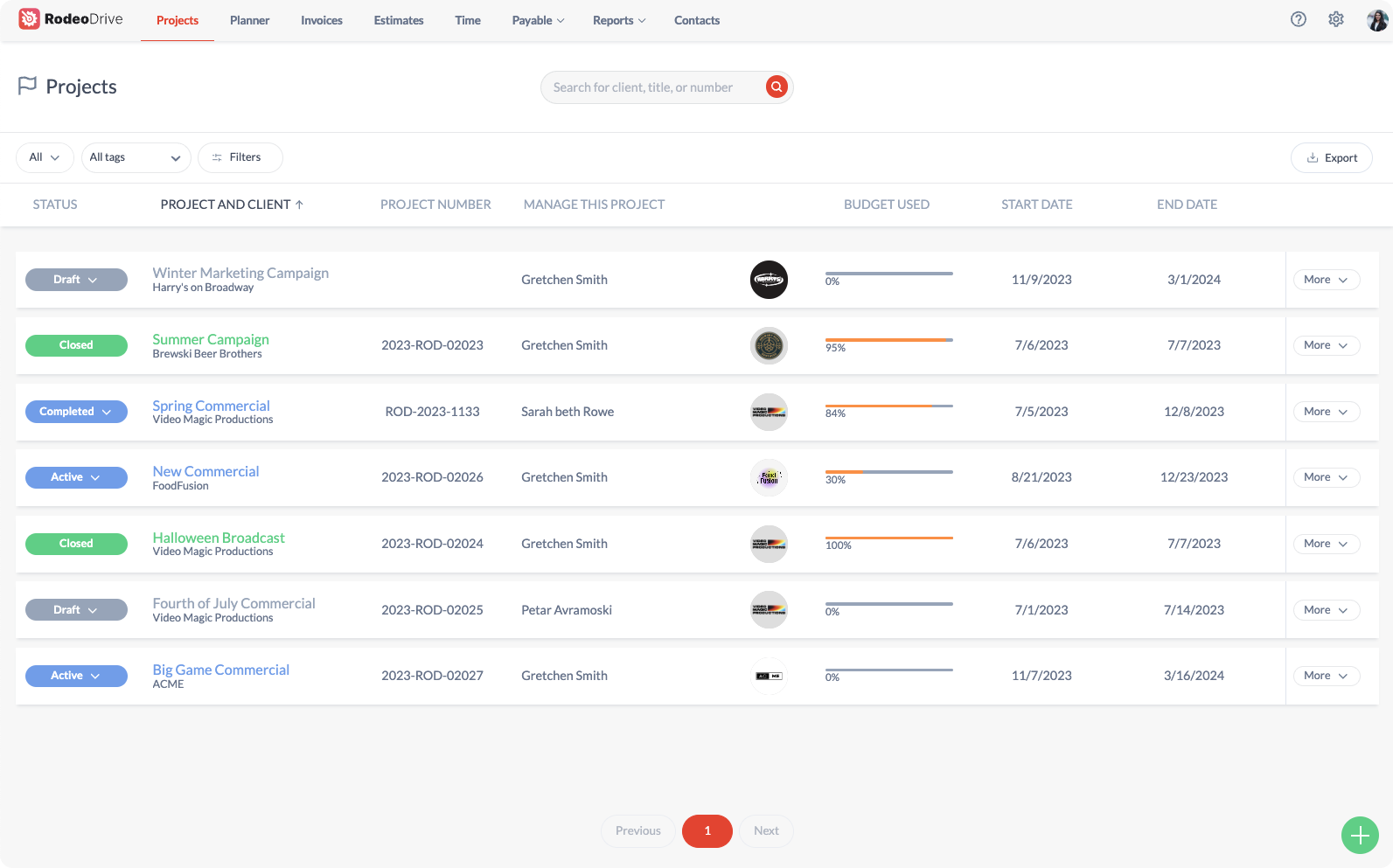
Rodeo Drive’s Projects page
From there, you’ll see all of Rodeo Drive’s other features clearly labeled on your top menu bar. This makes it easy to navigate to each feature, whether you need to access your Time, Reports, or Invoices tab.
Financial management, activity planning, and reporting — all in one place
Whereas Nifty is missing key features like in-depth reporting, Rodeo Drive does it all. The platform especially excels in financial management, as users can create phased budgets for their projects that will update instantly as they track their time.
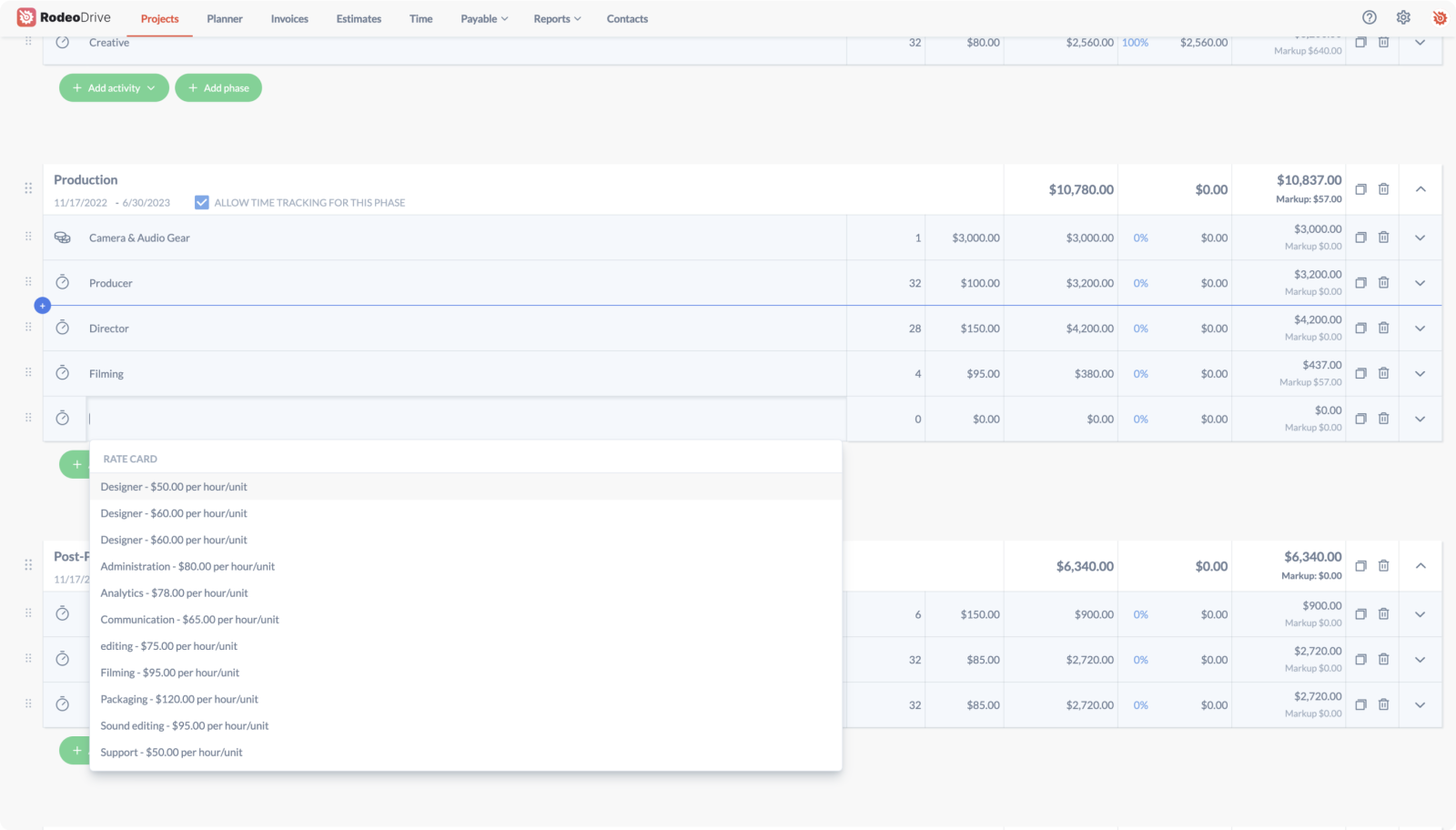
Building a project budget in Rodeo Drive
But Rodeo Drive goes beyond a simple budgeting tool. You’ll also be able to plan your project activities in our timeline-view planner and access reports on your team’s platform usage.
Customer support is always available via live chat
We won’t make you wait days for answers to your questions via email. Instead, users on Rodeo Drive’s Achiever plan will always have access to assistance through our live chat support feature.
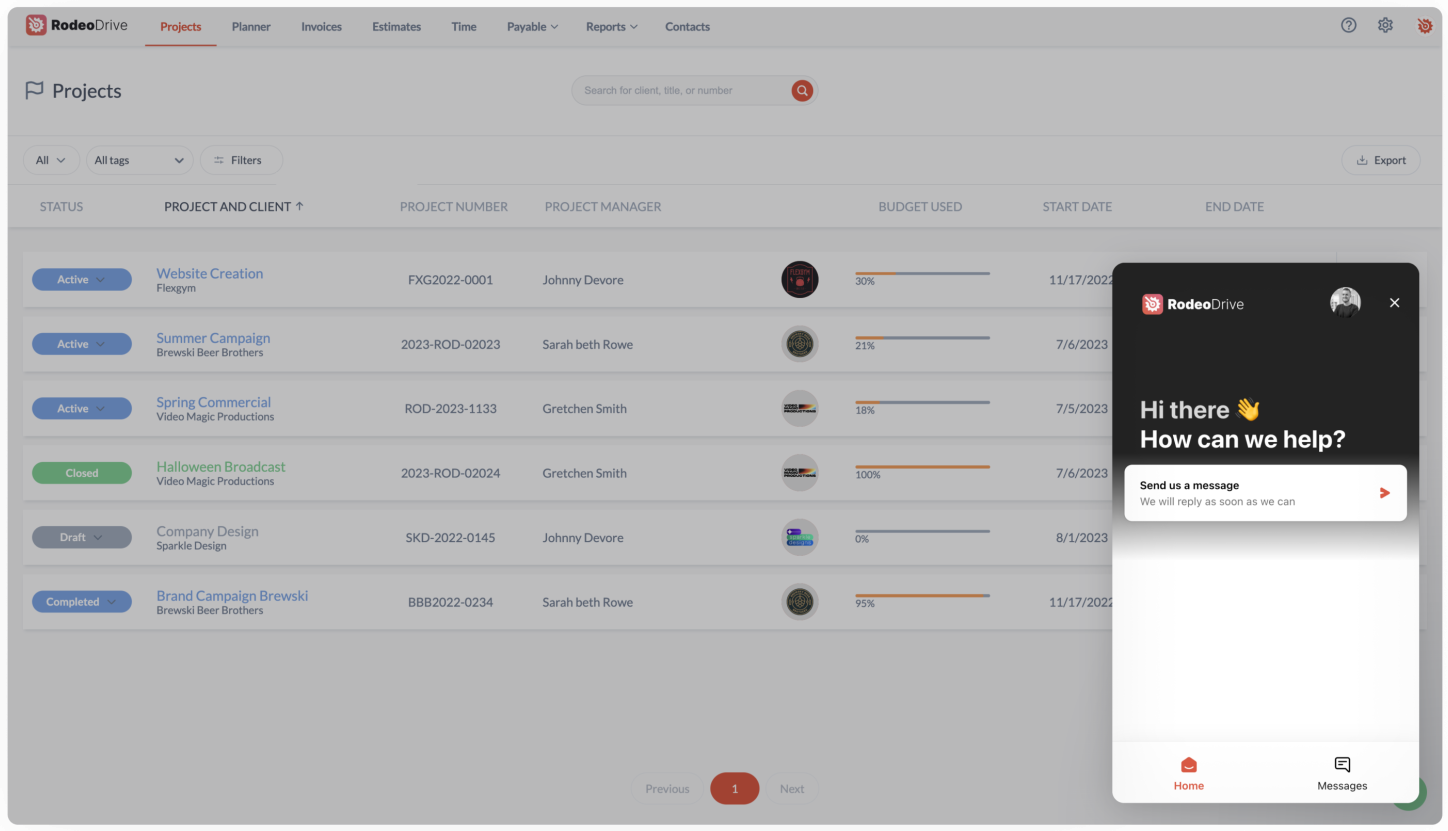
Rodeo Drive’s live chat support, which is included in the Achiever plan
Within minutes, you’ll have a direct line of contact with a Rodeo Drive expert who can get you the help you need. We also offer a robust support center where you’ll find articles explaining each of Rodeo Drive’s features if you’re looking for an in-depth walkthrough of how everything works.
Rodeo Drive’s additional features
- Time tracking: Easily record your hours worked by starting your live timer when you begin a task, or add a timecard later on to ensure you’re recording every billable hour.
- Planning: Rodeo Drive’s timeline-view planner allows you to better manage your team’s workload by assigning tasks based on their current capacity.
- Invoicing: Bill clients directly from the Rodeo Drive platform in the UK or via QuickBooks integration in the US.
- Client contact management: Keep track of your client and vendor information, files, and rate cards with Rodeo Drive’s contact management feature.
Rodeo Drive’s weakness
-
Mobile app development: While we do not currently offer a dedicated mobile app for Rodeo Drive, we have plans to address your mobile needs in the near future.
Rodeo Drive’s pricing
Rodeo Drive conveniently offers two pricing plans for users to choose from: the Free plan or the Achiever plan. Each plan offers the following features:
- Free plan: 3 active projects, in-app time tracking, planner access, and more
- Achiever plan: Everything in the Free plan, plus unlimited projects, in-depth reports, free guest users, live chat support, and more
2. Teamwork
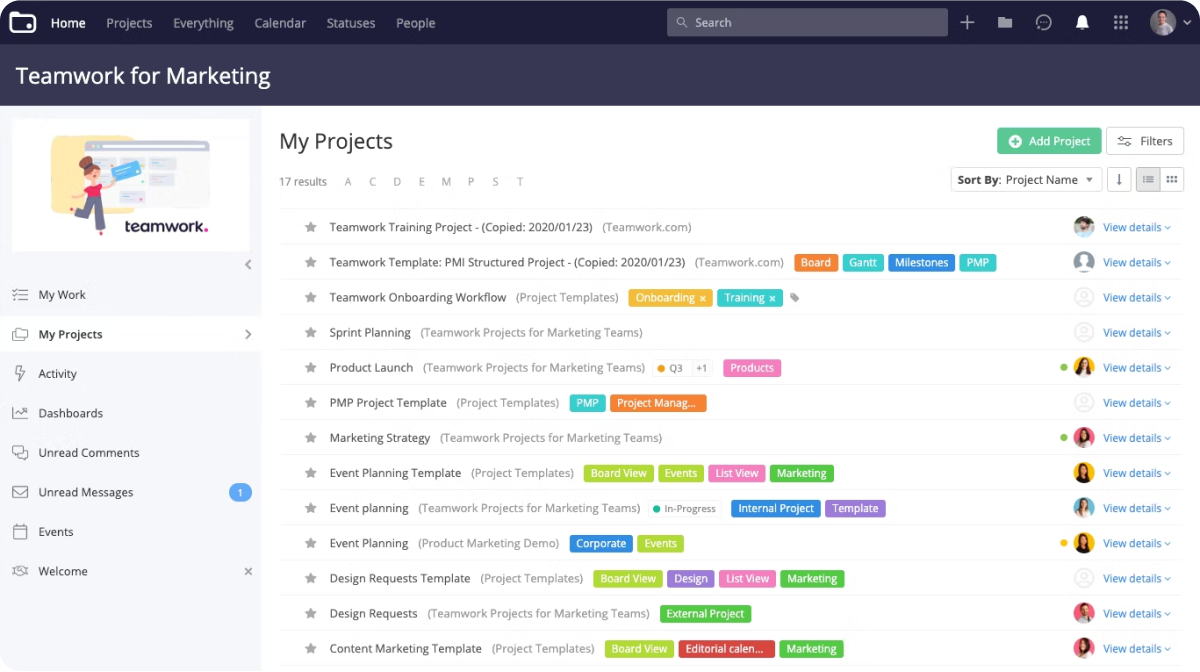
Source: Teamwork
Teamwork’s value lies in its ability to enhance your team’s collaboration through its project milestones, tasks, and messaging features — including the ability to streamline client communication.
Through Teamwork, project managers can give clients direct access to approve various project elements, which can cut out the need for lengthy back-and-forth emails on approval processes. Other features like task management and multi-project views are also available within the tool.
Related: 20 Best Teamwork Alternatives [In Depth Review]
Teamwork’s popular features
- Resource management
- Task planning
- Client management
- Project views
Teamwork’s weaknesses
Some users find that Teamwork’s budgeting feature is not robust enough to meet all business needs. Plus, some online reviewers say that the interface can be confusing and outdated.
Teamwork’s pricing
- Free forever plan: Maximum 5 users, projects templates, and tasks
- Starter plan ($8.99 per user/month): Minimum 3 users, dashboards, user rates
- Deliver plan ($13.99 per user/month): Minimum 3 users, automations, and forms
- Grow plan ($24.99 per user/month): Minimum 5 users, workload and capacity management, advanced budgeting
3. Wrike
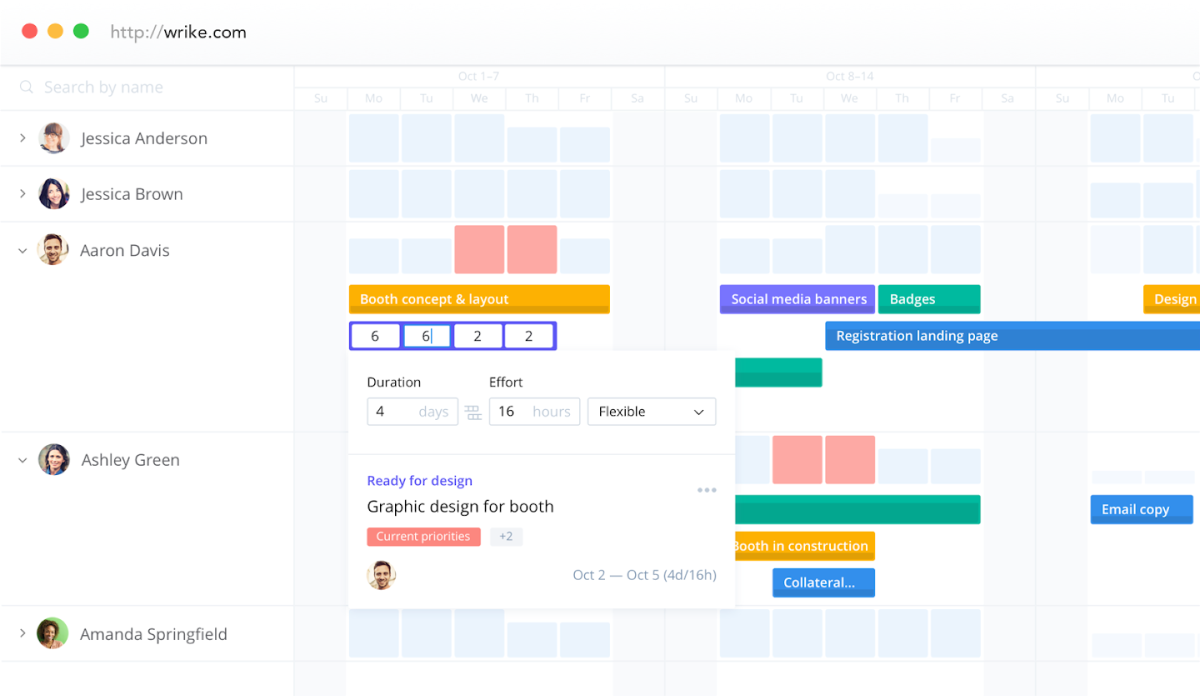
Source: Wrike
In terms of Nifty alternatives with extensive customization possibilities, Wrike might be a solution to explore. Key features like custom request forms, Kanban boards, and Gantt charts will prove useful for all sorts of project teams such as product and marketing teams.
Wrike also offers a diverse range of use cases, such as overseeing workflows, tracking projects, and managing resources. The platform can also integrate with several third-party tools, although these integrations will likely require additional subscription fees.
Wrike’s popular features
- Resource planning
- Gantt charts
- Workflow management
- Asset sharing
Wrike’s weaknesses
Wrike can be a bit complex for new users to immediately get the hang of. Plus, at nearly $25 per user/month for Wrike’s business plan, the tool has a higher price tag compared to most competitors. Wrike’s plans also come with limited collaboration features.
Wrike’s pricing
- Free plan: Project and task management
- Team plan ($9.80 per user/month): Custom fields, automations, dashboards
- Business plan ($24.80 per user/month): Reports, project blueprints, and folder structure
- Enterprise plan (pricing upon request): Admin permissions, SSO, and password policies
- Pinnacle plan (pricing upon request): Job roles, budgeting, and 15 GB storage per user
4. nTask
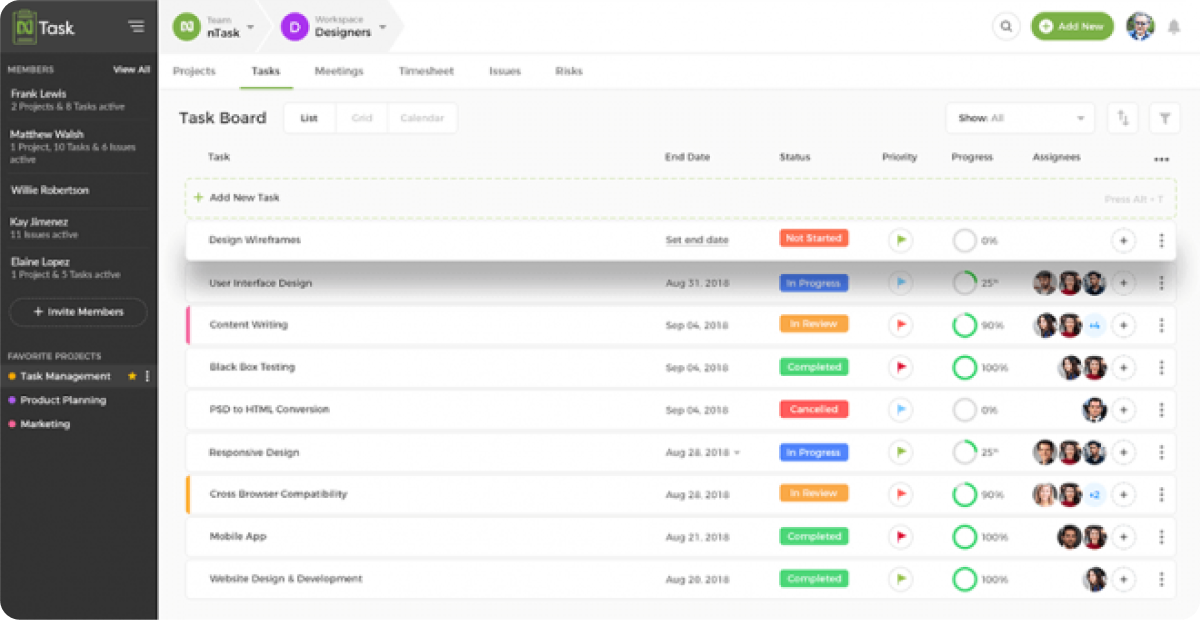
Source: nTask
nTask might work best as a Nifty alternative for teams that need strong task management in addition to other project management features. Because, unlike other task planning tools like Trello, nTask offers features like issue tracking, project risk management, and meeting management.
That said, issue and risk tracking might be more advanced features than your team even needs in the first place, which is why it’s not the best Nifty alternative for every team.
Related: nTask Alternatives: Your Comprehensive Guide to the Best Competitors
nTask’s popular features
- Task planning
- Issue tracking
- Risk management
- Meeting management
nTask’s weaknesses
A main weakness of nTask is its lack of advanced reporting capabilities. Some reviewers find it difficult to generate any reports at all, whereas others find that the types of reports available are a dealbreaker for some teams.
nTask’s pricing
- Premium plan ($4 per user/month): Unlimited projects, workspaces, and tasks
- Business plan ($12 per user/month): Custom roles, risk tracking, advanced reporting
- Enterprise plan (pricing upon request): Custom onboarding, 100GB of file storage
5. Basecamp
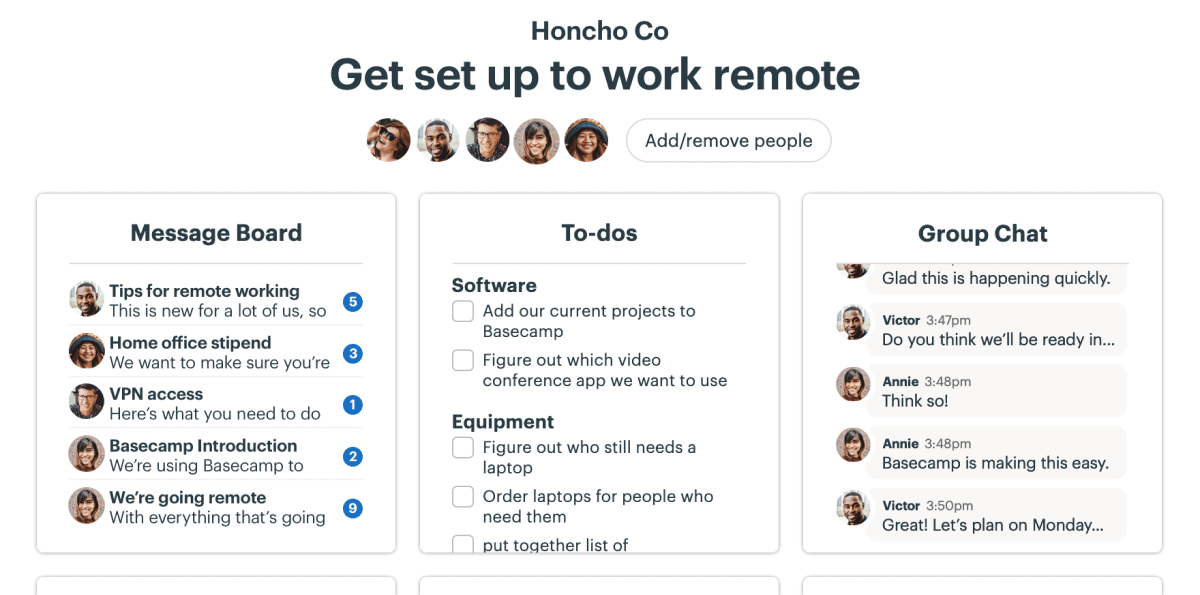
Source: Basecamp
Basecamp’s array of features — such as group chats, direct messaging, and automatic team check-ins — serve to streamline project communication and reduce the need to rely on external collaboration platforms.
But in terms of managing projects themselves, Basecamp only provides a single project view, making it best suited for simple and straightforward projects. Projects involving tracking billable hours might be difficult to manage using the platform as its time management features aren’t very advanced.
Also read: Basecamp Alternatives: A Deep Dive into the Best Competitors
Basecamp’s popular features
- Messages
- To-do lists
- Project schedules
- Automatic check-ins
Basecamp’s weaknesses
Basecamp lacks native time tracking, which means you’ll need to integrate an additional tool to be able to properly record your team’s hours worked. The platform’s reporting feature might also be too basic for users in need of in-depth reporting analytics.
Basecamp’s pricing
- Basecamp plan ($15 per user/month): 500GB storage, guest users
- Basecamp Pro Unlimited plan ($349 per month): Unlimited users, priority support, 1:1 onboarding
6. Monday
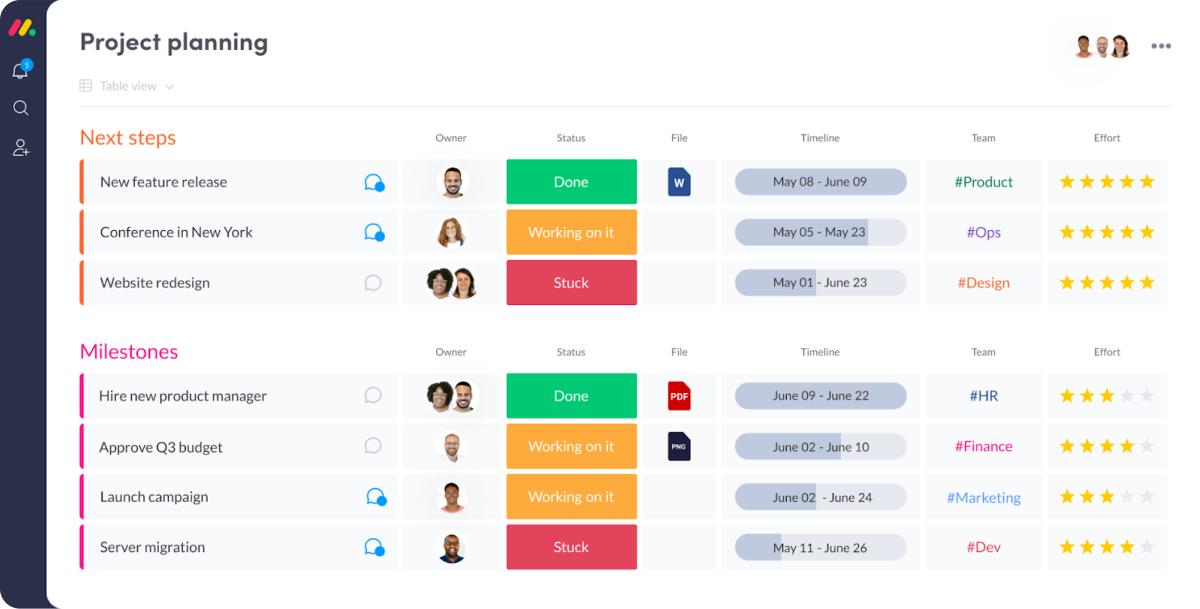
Source: monday.com
Monday’s vibrant interface distinguishes it as a Nifty alternative. The platform is most known for its customizability, as project managers are able to tailor their project tracking and organize their workflows however they best see fit.
Its recent addition of features like its Kanban view makes task tracking and planning simple for project teams.
Also read: Top 25 Monday Alternatives to Try
Monday’s popular features
- Kanban boards
- Dashboards
- Automations
- File uploads
- Forms
Monday’s weaknesses
Monday’s UI/UX can be difficult to understand for new users, and you won’t receive tailored onboarding assistance unless you have a large team and are paying for the enterprise plan.
And, although the tool does offer customizable reporting with advanced insights, it lacks the type of detailed, in-depth insights on metrics like project profitability and productivity that many teams rely on.
Monday’s pricing
- Individual plan (Free): 2 team members, 3 boards, unlimited docs
- Basic plan ($10 per user/month): Unlimited free viewers, 5GB storage, priority customer support
- Standard plan ($12 per user/month): Timeline and Gantt views, guest access, automations, integrations
- Pro plan ($20 per user/month): Private boards, time tracking, more automations and integrations
- Enterprise plan (Upon request): Security & governance, advanced reporting, tailored onboarding
- Note: All paid plans require a minimum of 3 users.
7. Smartsheet
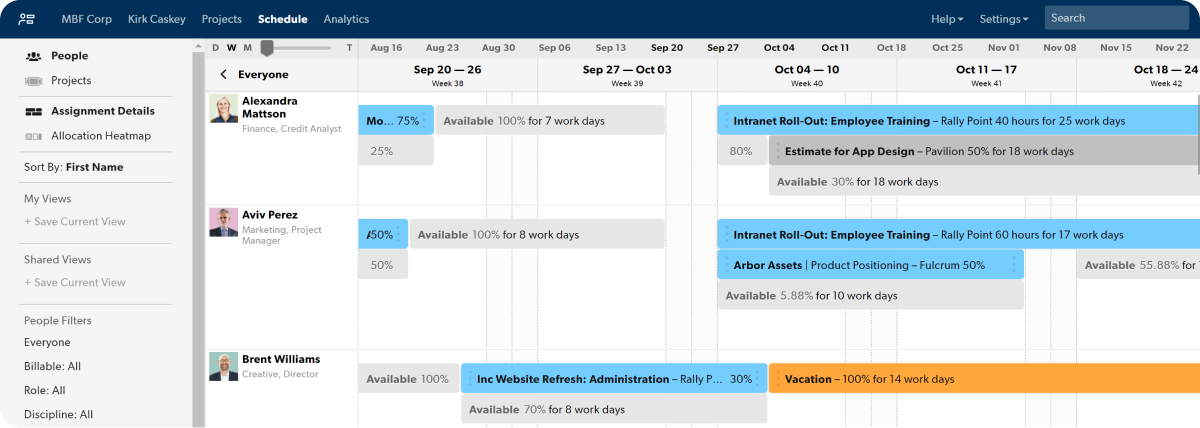
Source: Smartsheet
Smartsheet is a project management software tool most often characterized by its interface resembling that of a spreadsheet. Users are able to automate workflows, manage requests, and oversee various portfolios all within the tool’s framework.
The platform also offers more distinctive functionalities not natively offered by many other project management tools, such as digital asset management and content coordination. But on the flip side, features like time management and budgeting are notably absent.
Related: Smartsheet Alternatives: A Review of the Best Competing Software
Smartsheet’s popular features
- Workflow automation
- Digital asset management
- Portfolio management
- Team conversations
Smartsheet’s weaknesses
Smartsheet adopts a spreadsheet-like interface, which isn’t a fit for all teams and can take some getting used to. The tool is also missing essential features such as in-depth reporting, which project managers need to plan their future projects better.
Smartsheet’s pricing
- Free plan: 1 user, 2 sheets, 100 automations per month
- Pro plan ($9 per user/month): Up to 10 users, unlimited sheets, dashboards, and reports
- Business plan ($32 per user/month): Minimum 3 users, unlimited free editors, activity log, forms with conditional logic
- Enterprise plan (contact sales): Unlimited attachment storage, single sign-on, professional support
8. Hive
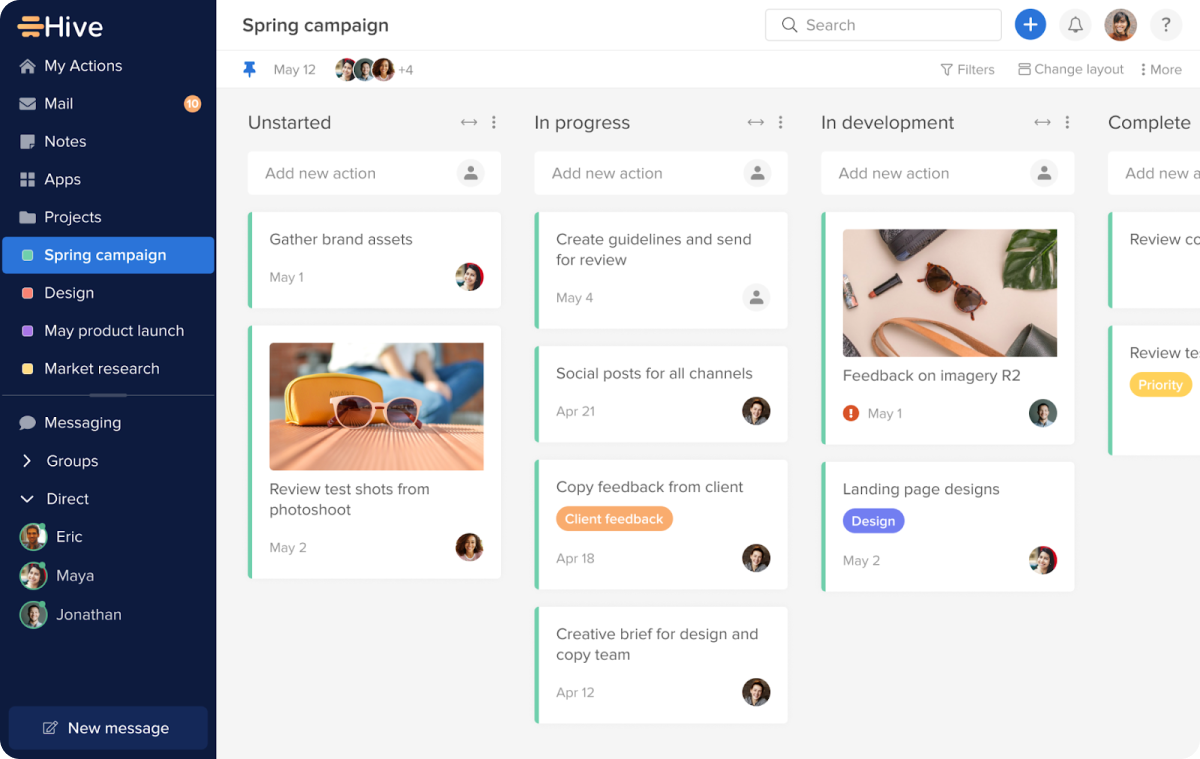
Source: Hive
Hive strives to help teams work faster by offering various project management, collaboration, and proofing capabilities. The tool claims to be the only project management platform made specifically for hybrid work.
In terms of what you can actually do with the platform, the tool has been increasingly integrating AI functionality into its feature offerings, including an AI assist tool to help with project notes. Users also have the ability to integrate with external apps and set up automations to save time.
Also read: Your Guide to the Best Hive Alternatives
Hive’s popular features
- Proofing
- Automations
- Time management
- Reporting and analytics
Hive’s weaknesses
Several online reviewers from sites like G2 and Capterra have criticized Hive’s lack of detailed reports, claiming that this feature is still a work in progress. Other critiques include the slow speed of the software.
Hive’s pricing
- Hive Solo plan: free
- Hive Teams plan: $18 per user/month
- Enterprise plan: Available upon request
9. Asana
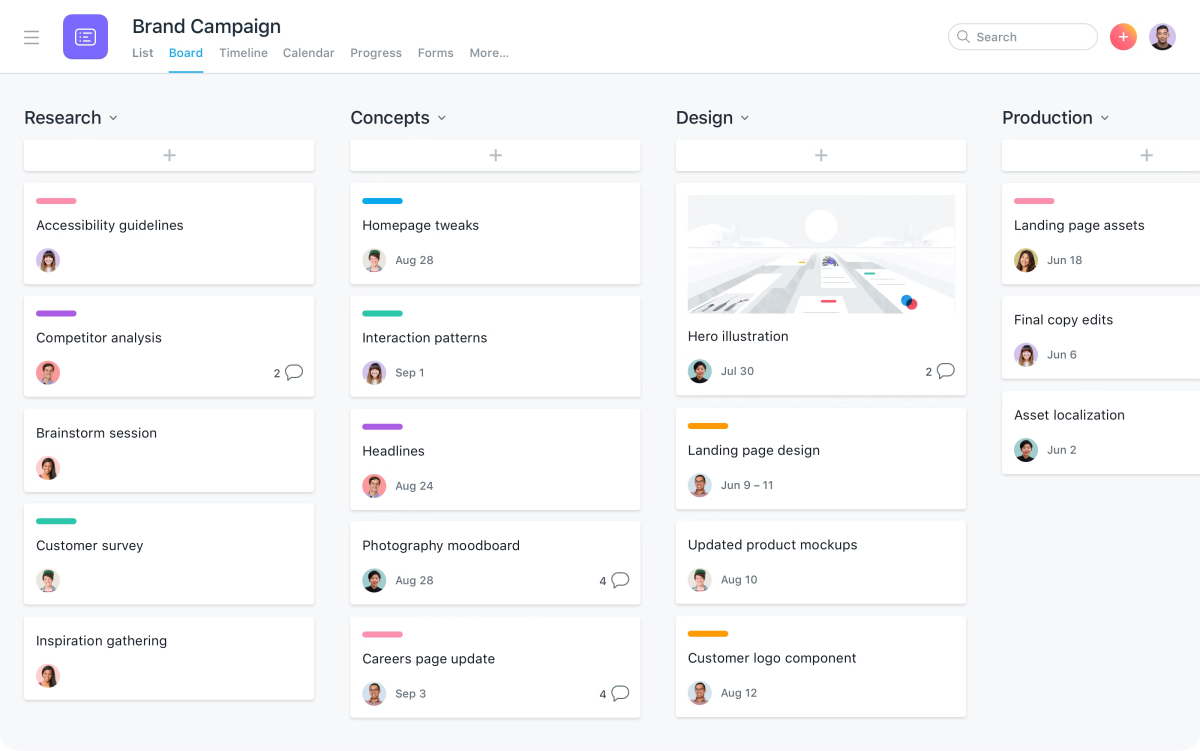
Source: Asana
As a prominent contender in the project management software space, Asana is popular for its task management capabilities. Asana’s main use cases include allocating tasks, defining objectives and milestones, and overseeing deadlines.
While Asana does conveniently offer a free plan, many users are disappointed by the free plan’s limited feature set. In order to fully access all of Asana’s task features, you’ll need to upgrade.
Asana’s popular features
- Milestones
- Task planning and prioritization
- Dashboards
- Templates
Asana’s weaknesses
Asana is primarily intended to be a task management tool, so it’s not suited for teams with more robust project management needs, such as financial management.
Many online reviewers also complain that Asana sends too many email notifications, which can make it difficult to determine which tasks to prioritize. This is particularly an issue if you have a lot of tasks and ongoing projects open at once.
Asana’s pricing
- Basic plan (free): Three project views, basic workflows, reporting
- Premium plan ($13.49 per user/month): Four project views, automated workflows, scaled security
- Business plan ($30.49 per user/month): Project and portfolio views, advanced reporting, resource management
- Enterprise plan (pricing available upon request): Advanced admin features and security at scale
10. ClickUp
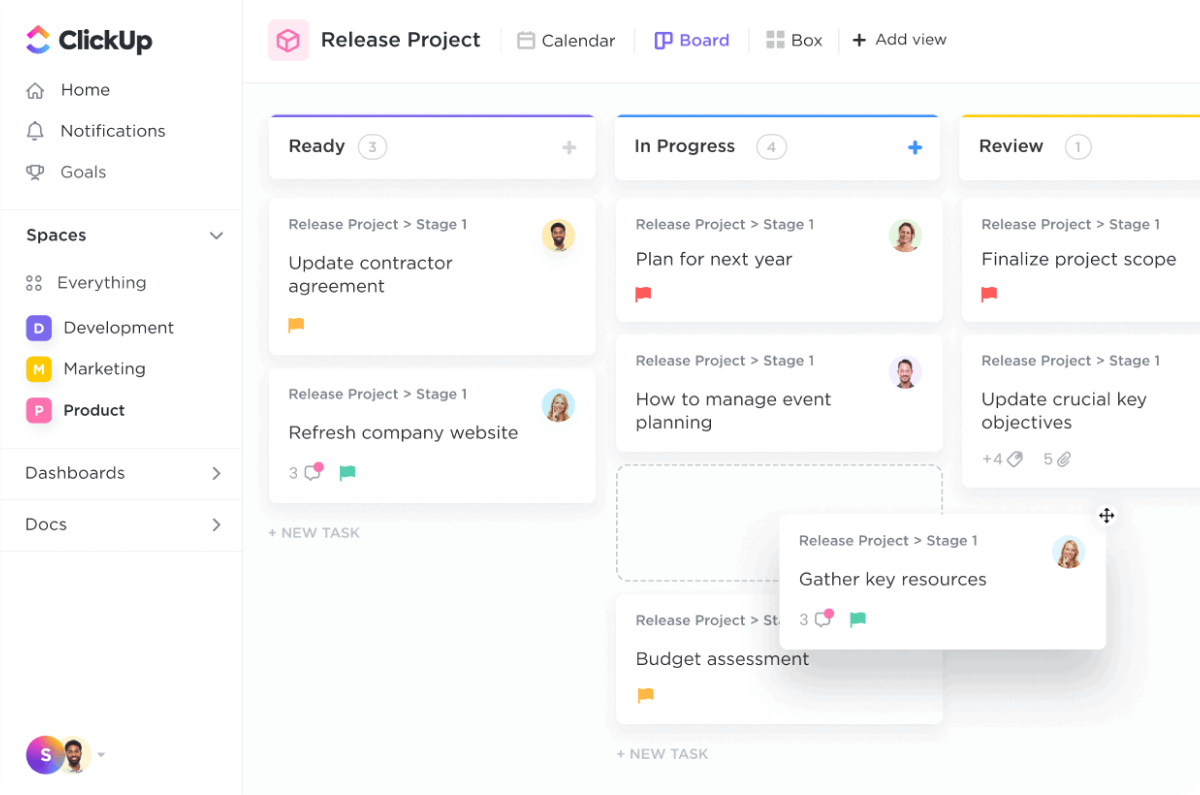
Source: Clickup
ClickUp boldly pledges to save users 20% of their time. Features like task management, project dashboards, and goal tracking help some teams do just that.
The platform positions itself as an all-in-one solution thanks to its dozens of available integrations. That said, a highly complex platform can cause a steep learning curve, so your team may end up needing a third-party expert to get everything set up within the platform.
ClickUp’s popular features
- Whiteboards
- Goal tracking
- Chats
- Dashboards
- Task management
ClickUp’s weaknesses
Because ClickUp offers more than 1,000 integrations and 35 different apps you can use to design your tasks, it can be extremely difficult to figure out how to best set up your workflows with so many different options.
And unfortunately, ClickUp isn’t known for its stellar customer support, should you have questions along the way. Many reviewers complain that the customer support team overly relies on copy-and-paste solutions rather than personalized help.
ClickUp’s pricing
- Free forever plan ($0): Kanban boards, calendar view, 5 workspaces
- Unlimited plan ($10 per user/month): Unlimited storage
- Business plan ($19 per user/month): Unlimited teams, custom exports, advanced dashboards
- Enterprise plan (upon request): Advanced permissions, unlimited custom roles, SSO
11. Trello

Source: Trello
If you’re looking for a Nifty alternative that’s user-friendly and intuitive, then Trello is a solid option, as long as task management is your primary focus.
The tool leans into the Kanban method of managing tasks, meaning your project lists will be visually represented in a column format depending on their current status within your workflows. Project team members can then drag tasks between columns as they progress.
Related: Top 22 Trello Alternatives for Project Management [Free & Paid]
Trello’s popular features
- Recurring tasks
- To-do lists
- Task dependencies
- Planning
Trello’s weaknesses
Trello is not a suitable solution for full-scale project management, as it’s primarily intended for simpler task management and planning. It can also be difficult to scale due to its limited functionalities. So, as your business and teams grow, Trello may struggle to keep up.
Trello’s pricing
- Free plan: 10 boards, 250 workspace commands, unlimited cards
- Standard plan ($6 per user/month): Unlimited boards, advanced checklists, unlimited storage
- Premium plan ($12.50 per user/month): Multiple workspace views, security features, workspace-level templates
- Enterprise plan ($210 per user/year for 50 users): Organization-wide permissions, multi-board guests, attachment permissions
12. Zoho Projects
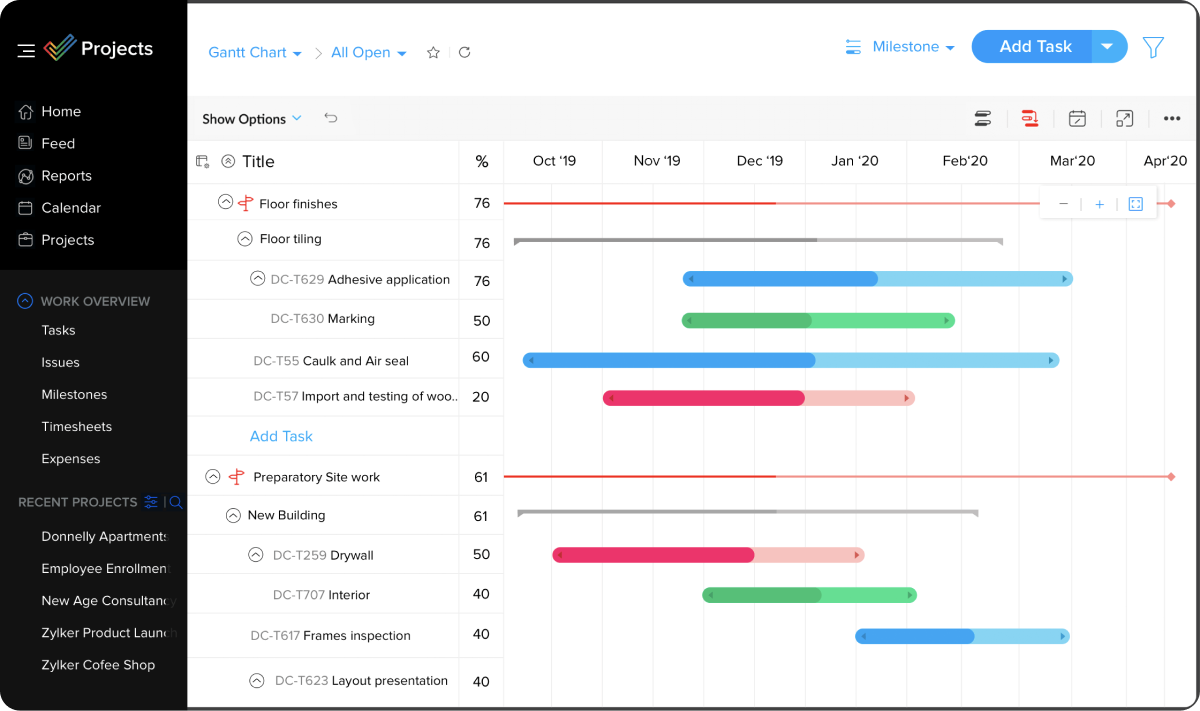
Source: Zoho Projects
You might’ve heard of Zoho before, as there are many different software tools within the Zoho brand. While other tools focus on HR, sales, and customer support, Zoho Projects is dedicated to project management, making it a decent Nifty alternative.
With features like task planning and team collaboration, this tool will undoubtedly help your team manage projects, but none of its features significantly stand out against competitors.
But, since Zoho Projects integrates with all of the other tools within the brand’s ecosystem, teams who are already using another Zoho product may want to check this one out.
Zoho Projects’ popular features
- Team collaboration
- Task management
- Time tracking
- Reporting
Zoho Projects’ weaknesses
Some reviewers report that Zoho Projects is difficult to navigate. Every time you need to change something in a project settings, you’ll need to find the appropriate settings within the complicated interface. There isn’t great customer support to help you out either.
Zoho Projects’ pricing
- Free plan: 2 projects, up to 3 users, 5GB storage
- Premium plan ($5 per user/month): Unlimited projects, 20 project templates, 100GB storage
- Enterprise plan ($10 per user/month): 30 project templates, read-only users, task workflow rules
13. Airtable
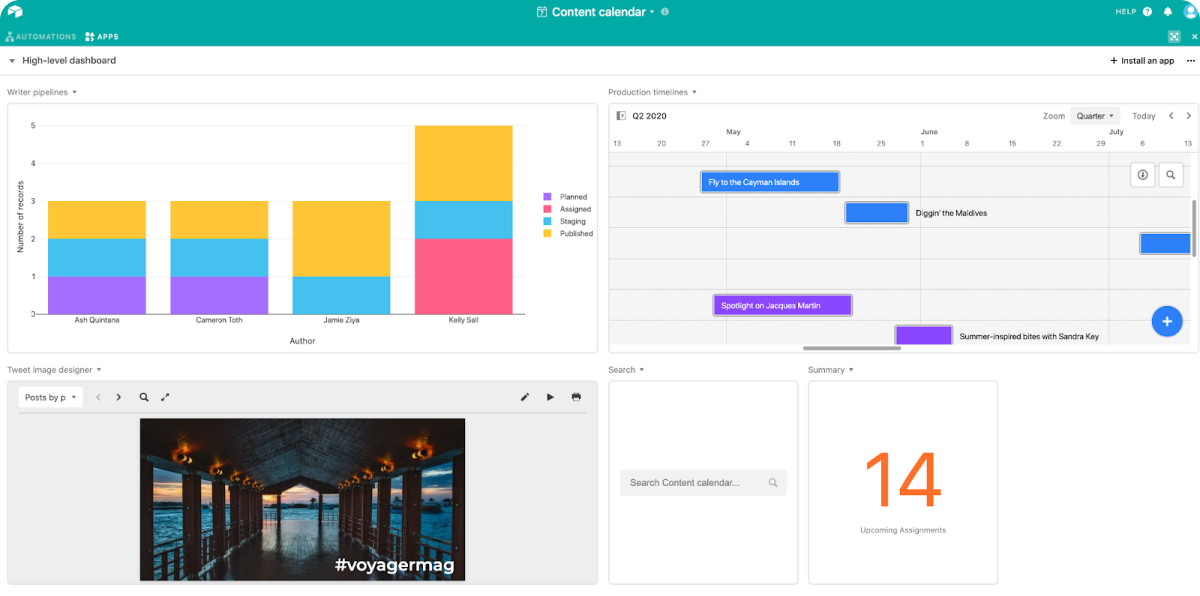
Source: Airtable
Airtable fuses a spreadsheet and database together into a single project management tool. The tool is fairly adaptable, meaning you can assemble to-do lists or store data, depending on your project’s needs.
Because Airtable uniquely merges two different tools into one, it’s fairly different from Nifty in terms of functionalities. This also means that many teams looking for a Nifty alternative won’t find it to be a suitable solution.
Airtable’s popular features
- Interface designer
- Reporting
- Various data visualization views
- Automations
Airtable’s weaknesses
Because Airtable can function as a sort of project database, organizing your project documentation in a way that’s convenient for your team can be a challenge. You also may need some low-code technical knowledge to properly personalize the platform for your workflows.
Airtable’s pricing
- Free plan: Unlimited bases, up to 5 editors
- Plus plan ($12 per user/month): 6-month revision history, custom branded forms
- Pro plan ($24 per user/month): Gantt and timeline views, granular interface permissions
- Enterprise plan (contact sales): Unlimited workspaces and extensions, advanced controls
Takeaway
Now that we’ve walked you through the different project management software tools out there, hopefully, you have a better understanding of the Nifty alternative that will meet your team’s needs best.
If you only need lightweight task management, Trello or Asana might do the trick. Or, if you’re looking to integrate with other Zoho tools, maybe consider looking into Zoho Projects.
But, if you’re looking to reduce your reliance on integrations when managing your project finances, and plan activities in a single tool, then Rodeo Drive is your best bet.
The best part is that you can try it for free with absolutely no risk involved. Get started with an account today or schedule a demo with a Rodeo Drive expert to learn more about the platform.





